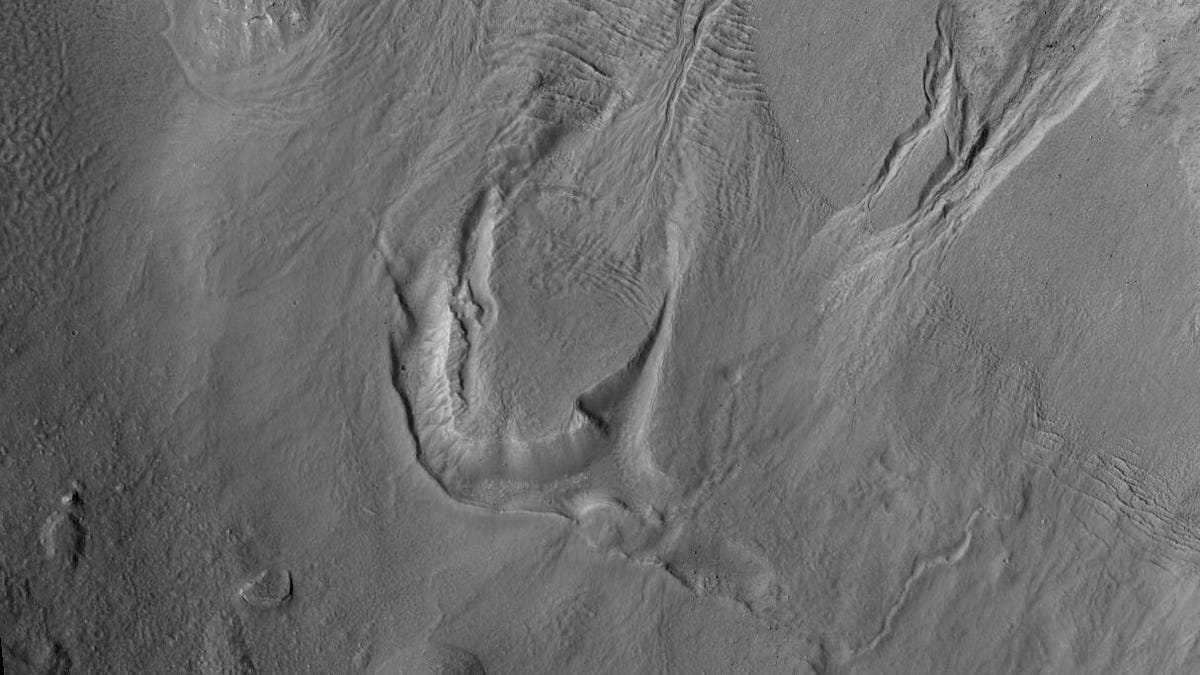Scientists spot 'previously unrecognized' water ice reservoir on Mars
Future human explorers will need water to survive and thrive on the red planet, but this area might be challenging to reach.
When humans get to Mars one day, they'll have some pressing needs. One of those is water. Water is heavy and hard to transport through space, so ideally they'll be able to find what they need to survive on Mars itself.
A new study led by researchers at the Planetary Science Institute (PSI) points to a "large, previously unrecognized reservoir of water ice" in the Nereidum Montes region of Mars. The paper -- published in the journal Icarus -- examined Viscous Flow Features (VFFs), icy formations found on the red planet.
VFFs have been compared with glacial formations on Earth and could be a potential source of water for astronauts.
"Our radar analysis shows that at least one of these features is about 500 meters thick and nearly 100 percent ice, with a debris covering at most ten meters thick," said PSI senior scientist Daniel Berman, lead author of the paper, in a statement on Monday.
These water ice deposits could represent "potentially the largest concentrations of any non-polar region in the southern hemisphere," according to PSI. The researchers used data from NASA's Mars Reconnaissance Orbiter to locate the VFFs, which date to within the last few million years of the planet's history.
The study ties in with other research on the history and current presence of water on Mars. NASA shared a "treasure map" of water ice deposits on Mars in 2019.
While it's tempting to pack a hair dryer and a straw and head for Nereidum Montes, it won't be that simple for future red planet explorers. "This region would be an interesting landing site due to the large amounts of ice, which could be used as a source for water," Berman said. "Unfortunately, it is very mountainous terrain and it would likely be very difficult to land there."


